Creating a Wedding Ceremony from Scratch | by Randi Fracassi
Today, we’re talking about the wedding ceremony. What should you expect when you’re planning one? What elements are necessary, what do they mean, and how can you make it your own? Lead on, Randi. 😉
First and foremost, let’s address that no two ceremonies are ever alike. Like the couple getting married, there’s a unique aspect to every one, and this is what makes each wedding so distinctive.
While most Southern wedding ceremonies follow the religious customs of a couple, there can also be instances where you may want a non-denominational officiate, or a close friend to preside. You may opt for a simpler ceremony, rather than a grand one. With that in mind, what all do you “need” in a ceremony? What can you do to make it fit you as a couple? And what parts are even necessary for it to be considered legal?
The general order of a ceremony goes something like this:
- Processional
- Opening Remarks
- Addressing the Couple
- Exchanging Vows
- Exchanging Rings
- Marriage Pronouncement
- The Kiss
- Closing Remarks
and (finally), the
- Recessional
It sounds like a lot, but once it’s all said and done, most ceremonies take 20-30 minutes. This may change depending on religious preferences. For example, a traditional Catholic ceremony includes the celebration of Eucharist and several readings, and Vietnamese weddings will generally include a Tea Ceremony earlier in the day. But, the basic formulation outlined above tends to work out best, to start.
PROCESSIONAL
The processional is the few minutes it takes for everyone in the wedding party to come into the ceremony. Whether your wedding ceremony is in a church, hall, or outdoor space, this is generally done to music. The Processional can vary in the order that people enter, but there are some general starting points. With my clients, we tend to start off with the grandparents being escorted in. They’re followed by:
- Mother and father of the groom
- Groomsmen
- Groom
- Officiate
- Mother of the bride and her usher
- Bridesmaids
- The bride and her father.
However, you can shake things up a bit by having bridesmaids and groomsmen walk with each other, or walking with both of your parents! There are really no hard and fast rules, but this is the usual order of things.
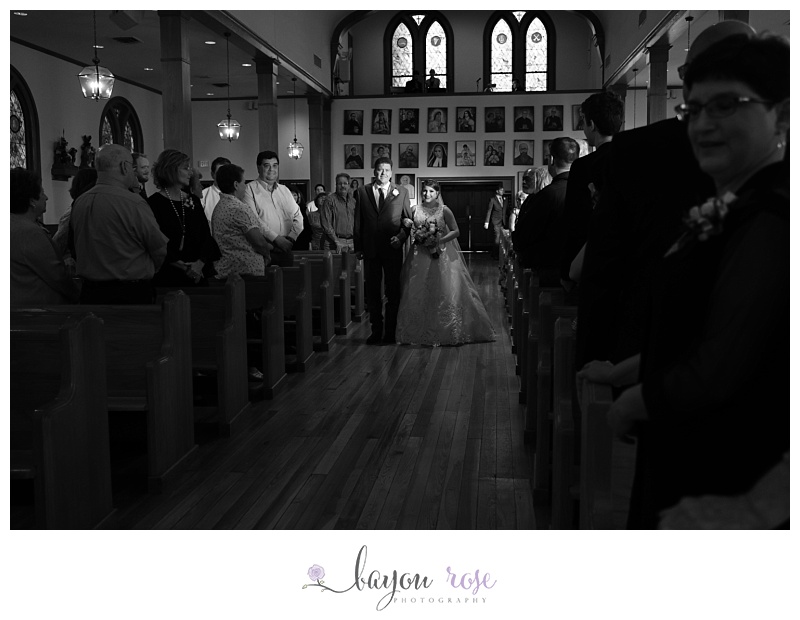
OPENING REMARKS
What are “opening remarks”? Well, many ceremonies start off with “Dearly beloved…”, or “Friends and family, we’re gathered here…”, and these are usually followed by asking “Who gives this bride?”
The formality for this part of the ceremony can vary depending on the overall style of the wedding, and can be adjusted to fit the preferences of the couple. Traditionally, parents giving the bride away was done in the age of dowries and bride gifts. Parents were essentially paying the groom and his family to have the bride as his wife.
This tradition has evolved to a newer and more touching meaning, now done to welcome the groom into the bride’s family. It also gives a nod to the new family being formed through the wedding ceremony.
After the opening line, the officiate will take a minute to two to acknowledge the family and friends gathered for the occasion and why, give a little background on marriage and its importance, and throw some personal comments about the bride and groom and their journey to this point in their lives.
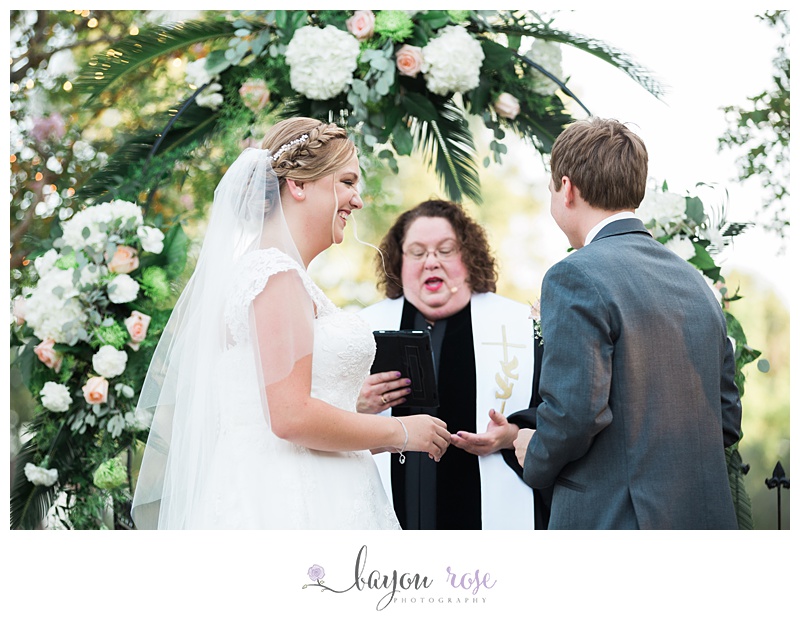
ADDRESSING THE COUPLE
The perfect segue from the “story” portion of the ceremony, this part of the wedding is specifically for the bride and groom. The officiate takes time to make sure that the levity of marriage and this commitment is not lost upon the couple, and fills them in specifically on what marriage entails. Between the Opening Remarks and Addressing The Couple, however, the Address should be more thoughtful, and cater to the couple and the foundation in which they want their marriage built on.
This is a great place to include a reading or two – a couple of my favorites are Union by Robert Fulghum, and To Love is Not to Possess by James Kavanaugh. Both of these readings speak of the foundation of marriage and what it means to be making this commitment to each other. While a little bit more formal and lengthy than other options, they’re perfectly appropriate for the occasion.
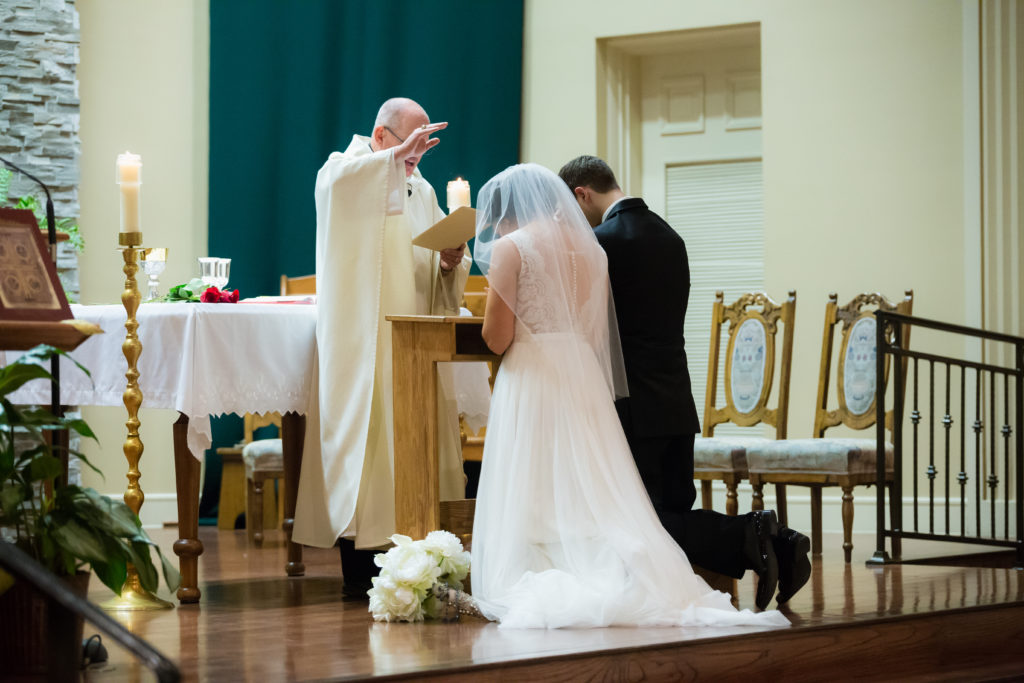
EXCHANGING VOWS
The most important part of any ceremony is by far the exchanging of vows. It’s during this time that you make your promises to one another, and there are many ways to do it. Whether you go the traditional route of repeating words from your officiate, or recite your personal vows to each other, it’s the most moving part of your ceremony.
If you opt for writing your own vows to each other, ask your officiate to review them to ensure that they match the level of formality and length of your ceremony. Conversely, if you decide to repeat your vows and both use the same words, I love THIS ARTICLE from The Knot with a variety of scripts and options that are more than just the traditional “repeat after me” lines.

EXCHANGING RINGS
Traditionally, the ring bearer presents the rings to the bride and groom. But there can also be instances in which an overly excited or shy child can no longer participate and perform their full role. It will always be my recommendation to make sure the Best Man is in charge of both of the wedding rings. Should they be dropped, he should also be responsible for picking them up (this also helps avoid any awkward shuffle between folks all scrambling to retrieve them).
Most often, rings are blessed before or as they are exchanged. If you’re wanting a hybrid version of reciting your own vows and having your officiate prompt you, this is a great time to integrate it. The Spuce has a great database of different wording and tweaks you can use to make exchanging rings more meaningful fit the level of formality of your ceremony.
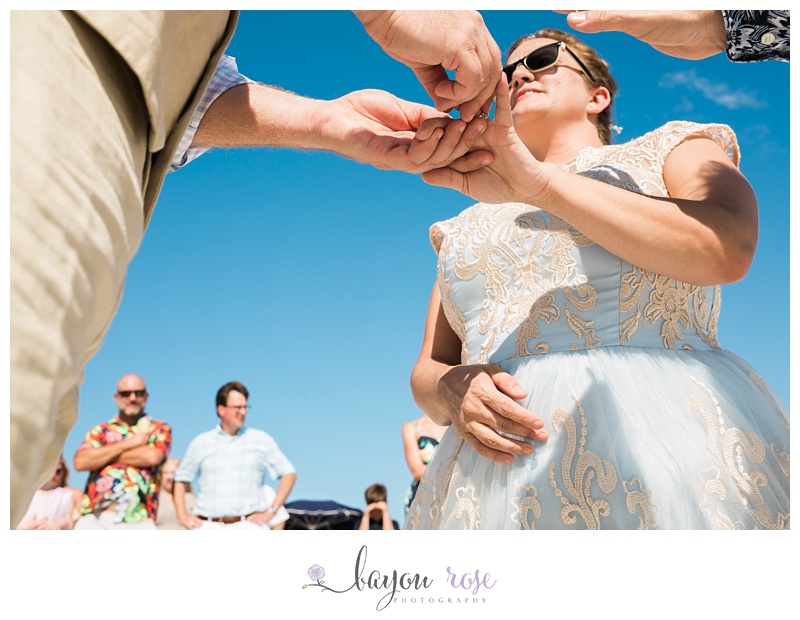
MARRIAGE PRONOUNCEMENT
Possibly the (second) shortest part of your ceremony, pronouncing you as officially married often prompts The Kiss.
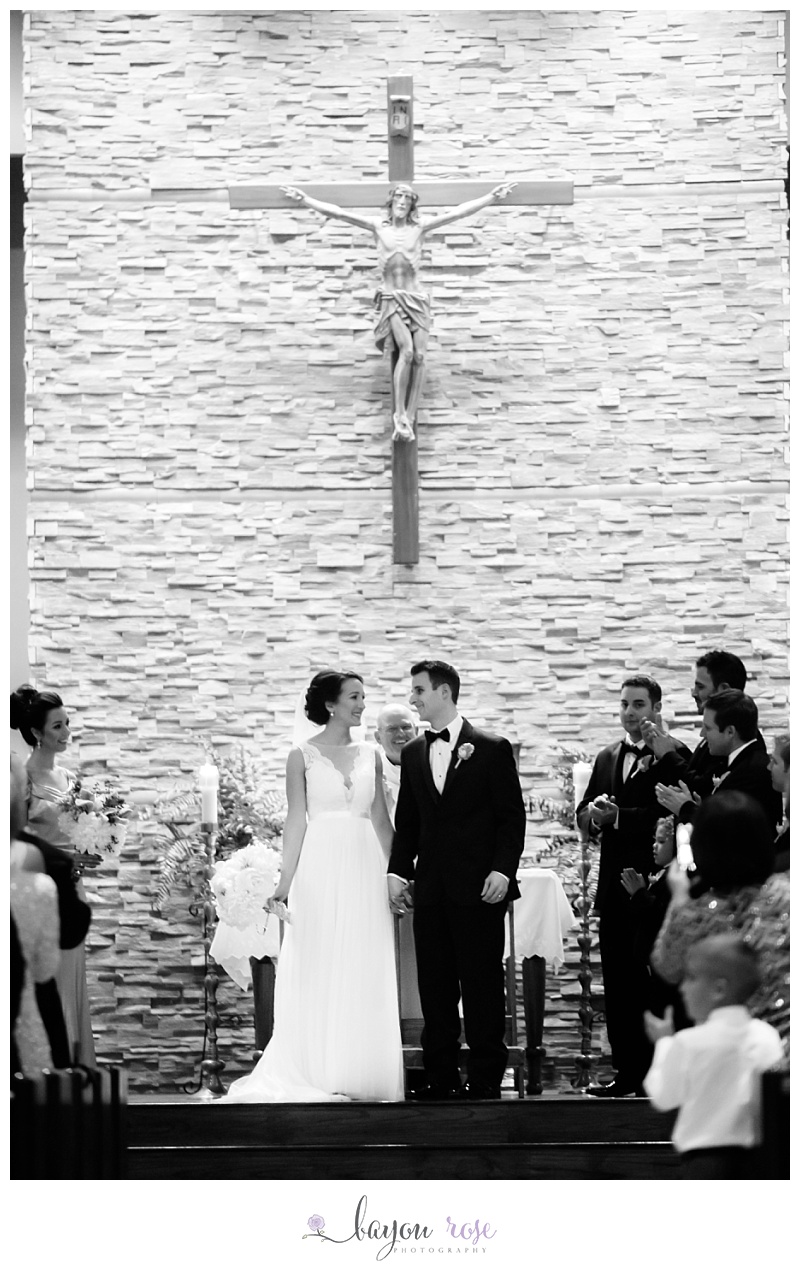
THE KISS
Pro tip: hold it for 5-7 seconds so you get excellent photos and video!
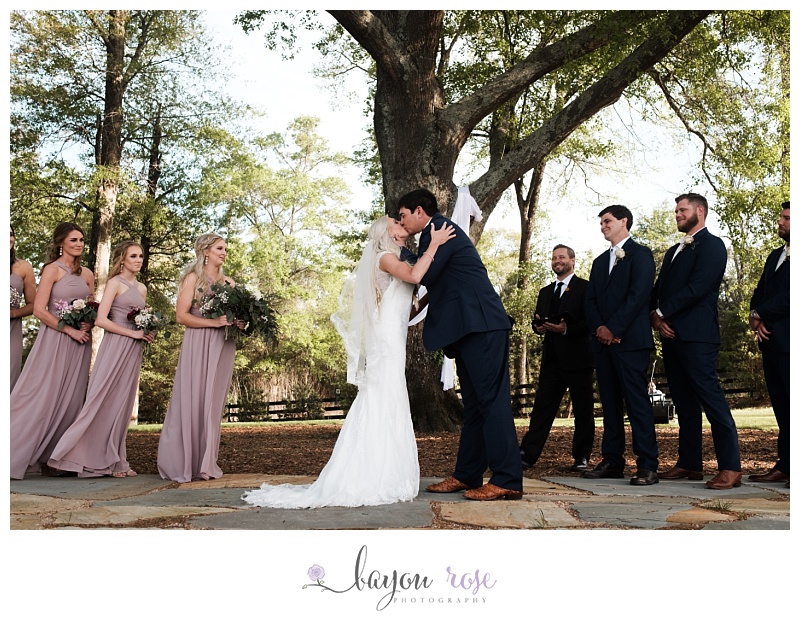
CLOSING REMARKS
These remarks should be brief, and end with the introduction of the bride and groom as a newly married couple. With a statement along the lines of “Now that [You] and [You Too] have declared their vows as witnessed by their friends and family, and by the power granted to me by the State of Louisiana, I now am honored to introduce for the first time as married couple…”
RECESSIONAL
This starts with the bride and groom walking back down the aisle, and they are then followed by bridesmaids and groomsmen (whether walking together or individually, in which case, bridesmaids will go before groomsmen). The couples’ parents usually bring up the rear. The officiate is generally the last person down the aisle, in case of final announcements (such as the reception location, rearrangements to be done, where refreshments are, etc). Music for the recessional can be lighthearted and fun (my personal favorite is Hooked on a Feeling by Blue Swede) or something more traditional. It is also a good idea, if you are formally exiting the ceremony site such as a church, to linger in front of the doors or exit space and share another 7 Second Kiss. If for nothing else, to celebrate being married to your soul mate!
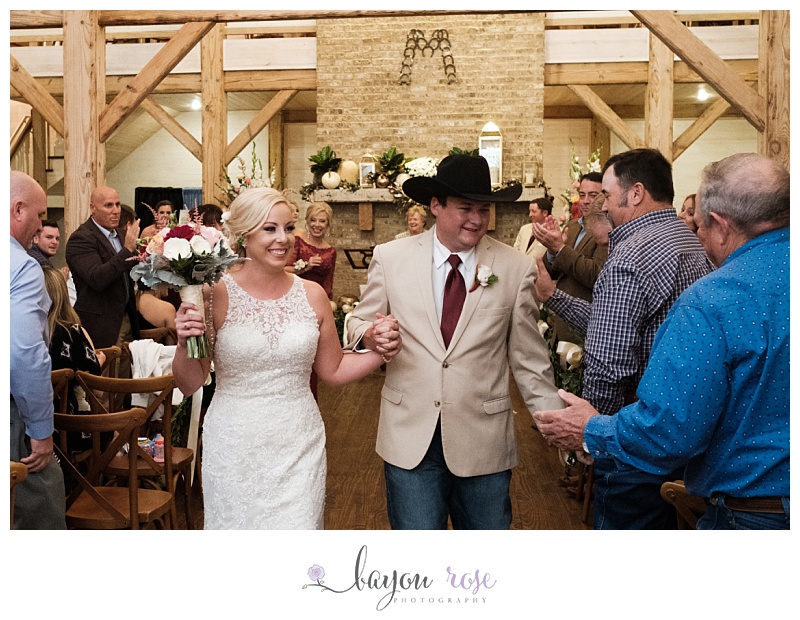

Your ceremony is the main piece of your entire wedding. Without it, there would be no marriage to be celebrating! Taking the time to make sure that it reflects you and your spouse, and make it sincere and heartfelt, will set the foundation on which your marriage is built upon. You’ll always remember those moments that it seemed as if time stood still, just for that second.
With this guide, I hope I made the process of planning and formatting your ceremony a little less stressful, and a lot more fun!
Happy planning,
Randi
Check out the other articles in Randi’s series, INTENTIONAL PLANNING, BEING A BRIDESMAID, and HAVING SUCCESSFUL VENDOR MEETINGS

comments +